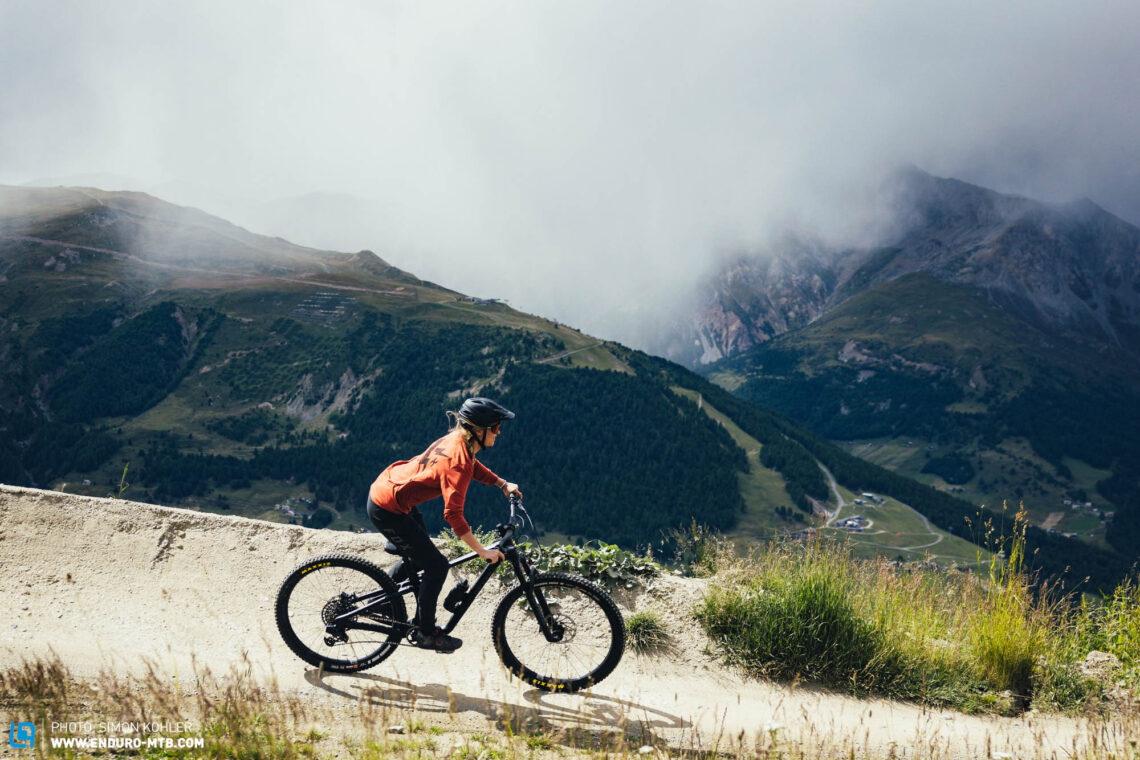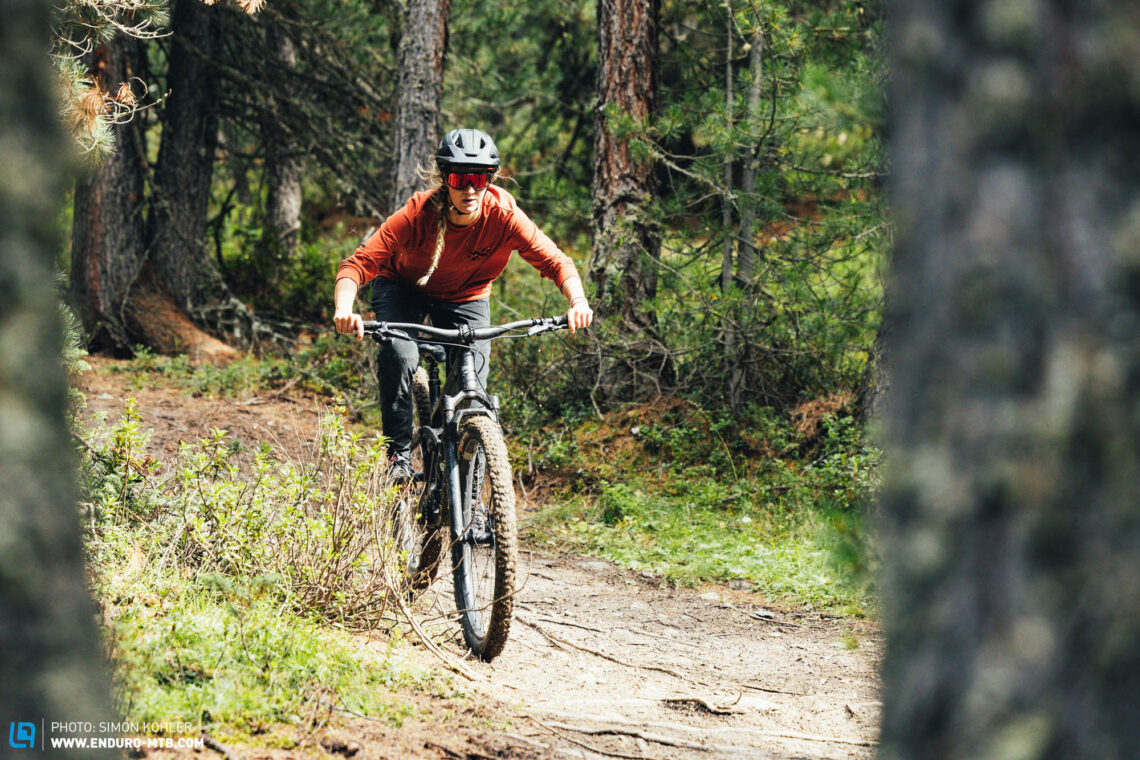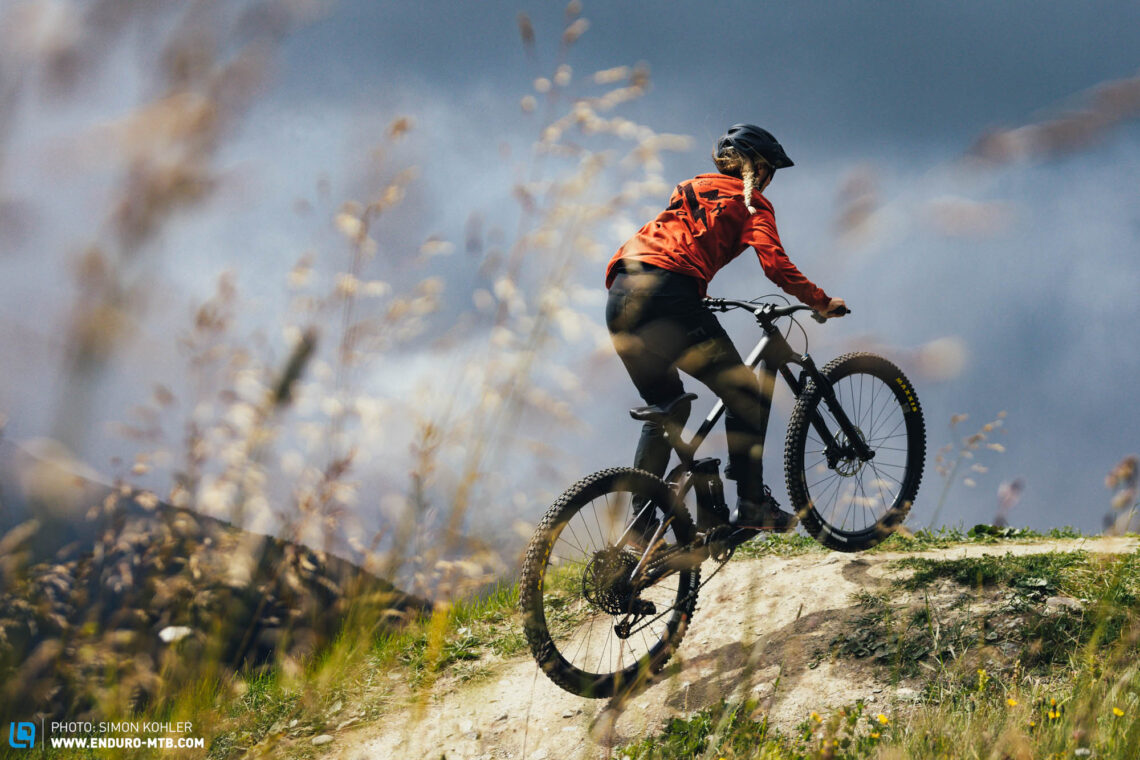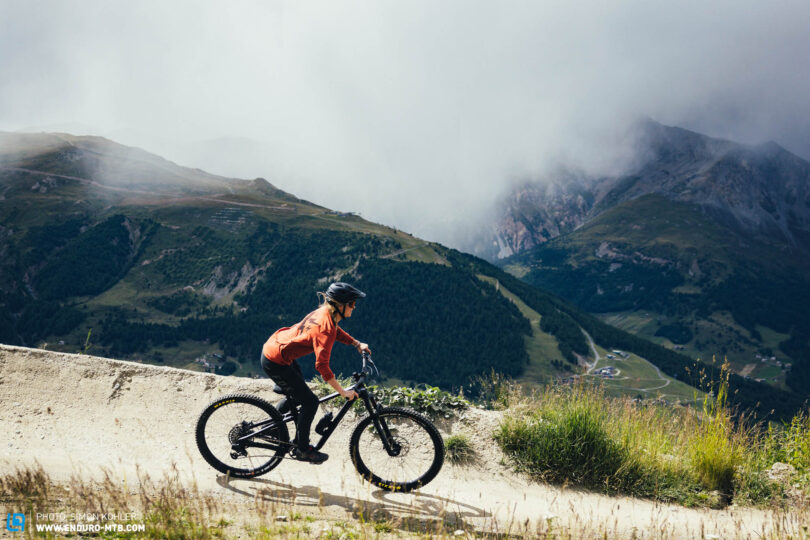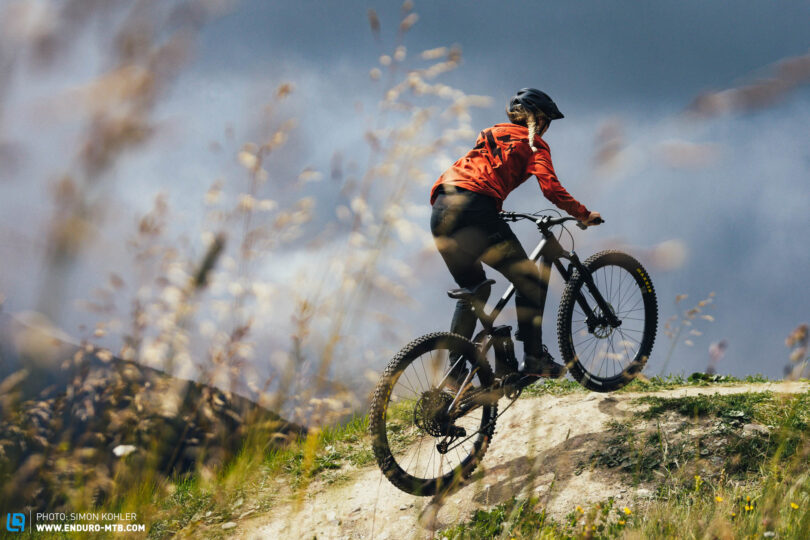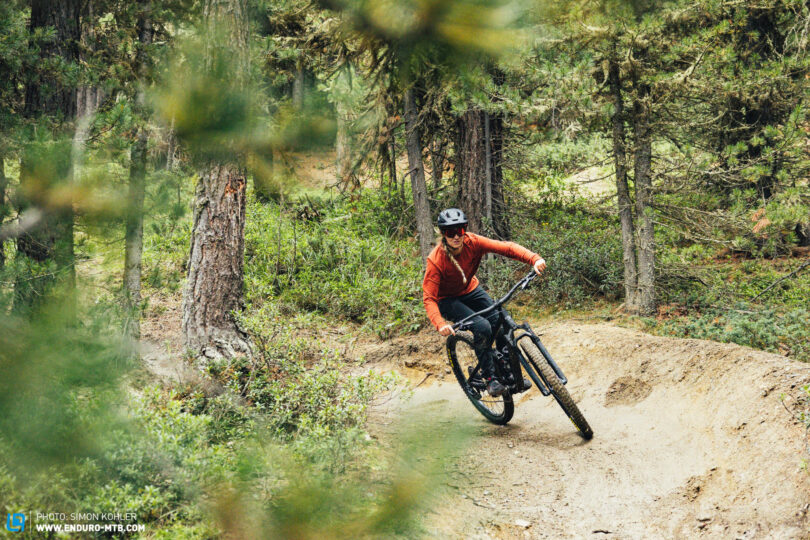What does a trail bike from a fledgling Swedish brand have in common with the incognito test driver from Top Gear? Both go by the name of Stig. We put the Detrail Stig 135 trail bike to the test to find out if it’s as fast as the original Stig, and whether the Swedish brand can deliver on its promise that “you set the limit not the trail.

Few will have heard of the fledgling brand Detrail before, because the small Swedish company only launched last summer. In addition to the Berg 155 with 160/155 mm travel, their portfolio includes three other models, all called Stig. The hardtail Stig with a 120 mm travel fork, the downcountry Stig 115 with 120/115 mm travel, and our test bike, the Stig 135 with 140/135 mm travel, each build of which can be individually configured to some extent.
The special feature: Detrail rely on open mould carbon frames, which are developed and produced by a third-party manufacturer – a silent production partner, you could say. The production of carbon frames requires a special mould to layer the carbon, which is prohibitively expensive for smaller bike brands. Outsourcing part of the development work and relying on a freely marketable mould saves a lot of money, and makes it easier for brands to enter the bike industry. What’s cool about Detrail is that they actually talk about it openly rather than keep quiet about it, which is what many other bike brands do! Moreover, open mould frames allow for lower retail prices, which is a great advantage for end users.
In terms of price, the Stig 135 ranges between € 3,799 and € 6,499. Our test bike weighs 13.7 kg. and costs € 4,799. The Detrail Stig 135 is marketed as a true all-rounder, promising to be easy and fun to ride on a wide variety of trails. Detrail claim that “you set the limit, not the trail”, but can the bike deliver?
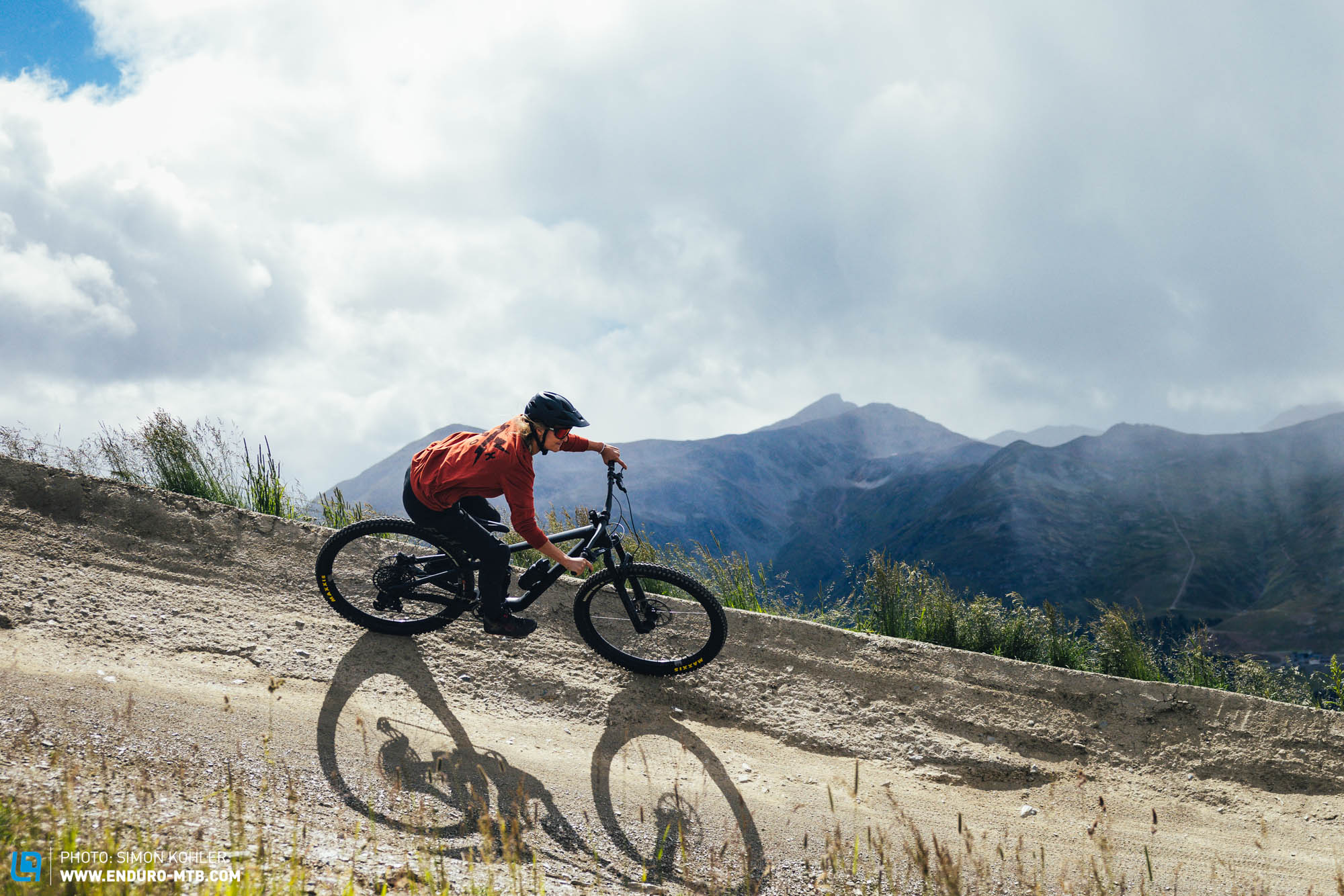
The Detrail Stig 135 in detail
The Detrail Stig 135 looks unobtrusive, featuring clean lines with a classic four-bar layout, and a vertical shock. The long down tube protector is made of a thin neoprene-like material and doesn’t upset the bike’s unobtrusive look. You’ll also find a rubber protector on the chainstays, which effectively dampens the noise of the chain.
The cables are just as quiet, which are fed into the frame via ports behind the head tube and merely secured with rubber plugs. Unfortunately, these look a bit cheap and don’t quite match the rest of the bike’s premium feel, and they can occasionally get pulled out of the frame if you turn the handlebar too far.
Apart from one set of bottle cage bosses, there are no other mounting points for your trail essentials on the Stig, and Detrail have yet to catch on to integrated storage compartment trend. While this suits the brand’s minimalist aesthetic, it means you’ll have to stuff your things into your pockets or carry a hip bag.
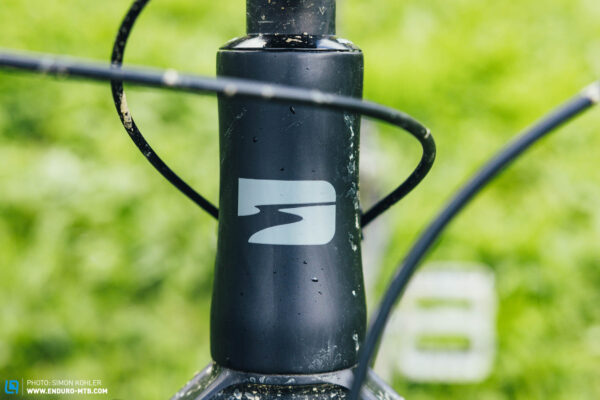
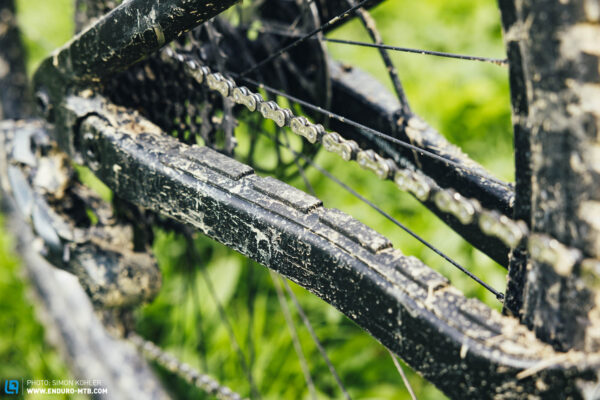
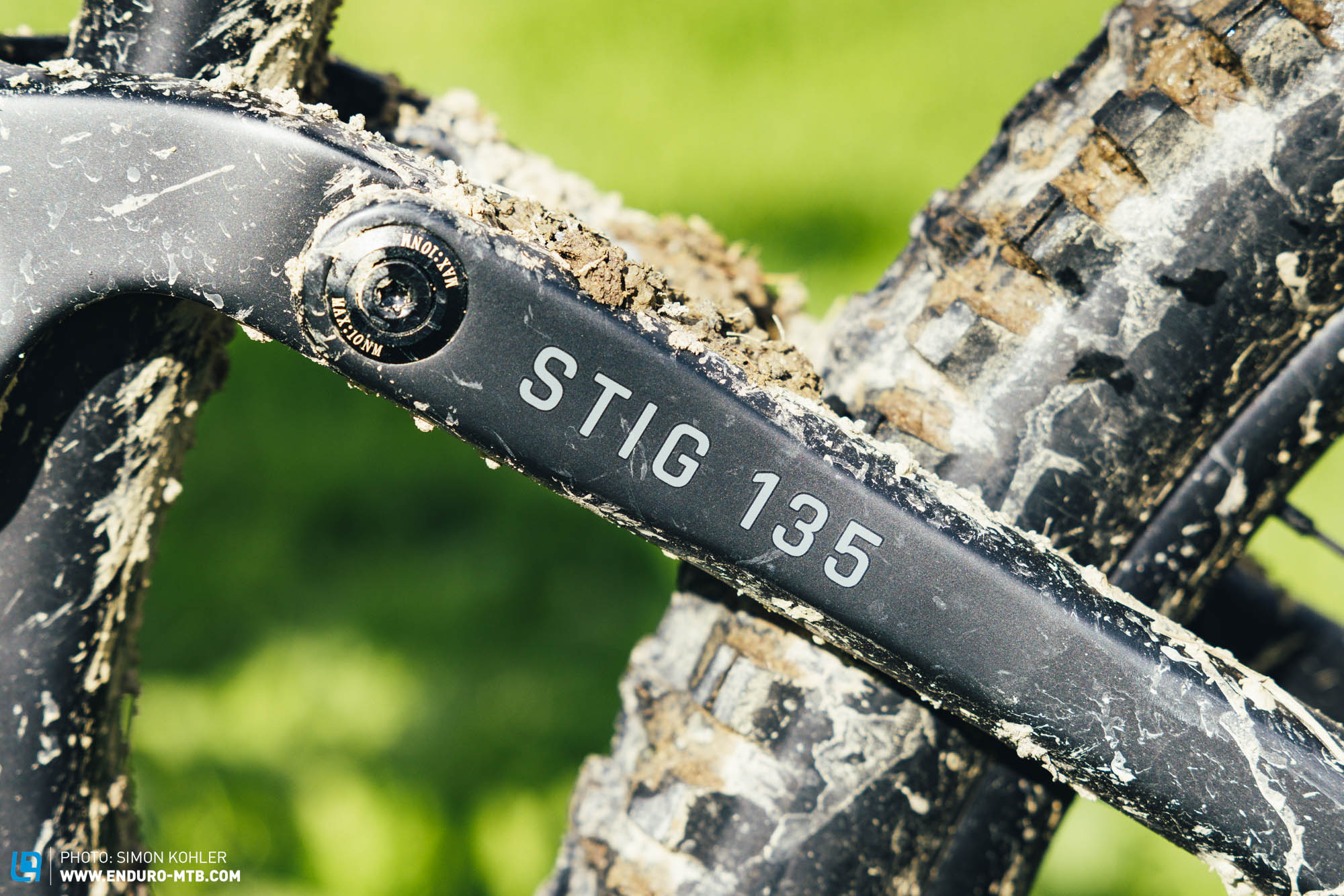
The build variants and configurations of the Detrail Stig 135
Thanks to the mini configurator, you can spec the Detrail Stig 135 to better suit your preferences and budget. The configurator lets you pick one of three suspension packages: Core, Performance, or Expert. You can also choose from one of these three variants for the drivetrain, brakes, and wheels. The only drawback here is that these components come as a set, so you can’t upgrade just the brakes, for example. Finally, you can choose between models with less rolling resistance or others with more grip when it comes to the tires. However, not all components can be configured. As such, all sizes of the Stig come with a 800 mm wide Detrail Höjd 30 carbon handlebar, which is too wide for a short-travel bike, especially for small riders. The handlebar is combined with a 50 mm Descendant Truvativ stem.
Unfortunately, the Crankbrothers Highline 3 dropper post isn’t customisable via the mini configurator either. With just 150 mm drop, it restricts your freedom of movement, and even the ergonomic remote can’t change that.

The first item on the configurator is the suspension. Our test bike has the most affordable Core version with a 140 mm travel RockShox Pike Select fork. This is paired with a RockShox Deluxe Select+ shock, managing 135 mm travel at the rear. Both offer easy adjustability and perform convincingly on the trail. However, the lock-out level on the shock is nearly impossible to reach while you’re on the bike since it’s installed upside down.
You can also go for the € 400 Performance package consisting of a RockShox Pike Ultimate fork and the same RockShox Deluxe Select+ shock. For a whopping € 1,400 surcharge, you can get the Expert version, boasting an Öhlins RXF36 Air fork and an Öhlins TTX1 Air shock.
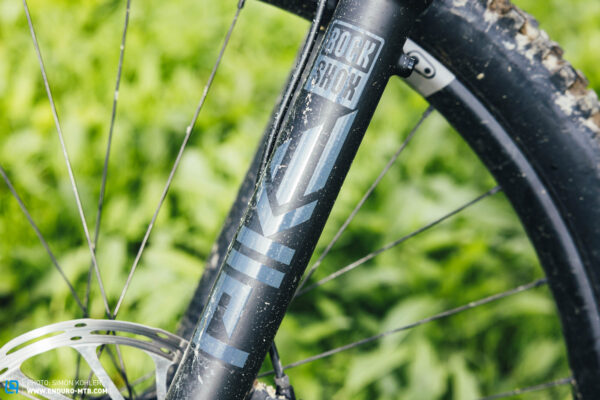
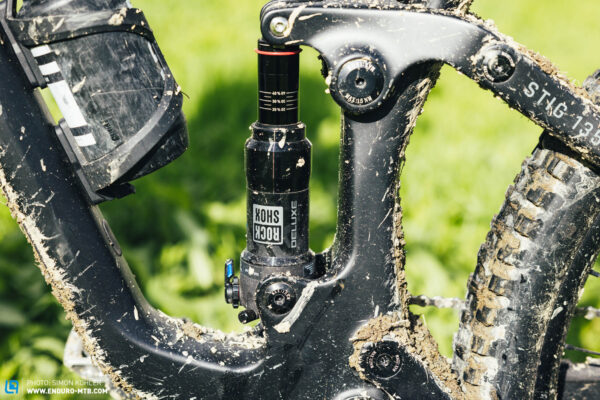
You can then choose the Core version with a Shimano XT 12-speed drivetrain, the Performance version with a SRAM GX Eagle 12-speed drivetrain for a surcharge of € 400, and the Expert version with a wireless SRAM X0 Transmission AXS drivetrain for a considerable € 1,300 more. Each of these also come with different wheelsets and brakes. The Core version includes a Shimano SLX MT620 wheelset, and Shimano DEORE four-piston brakes. The Performance and Expert variants, on the other hand, come specced with an aluminium Crankbrothers Synthesis Enduro wheelset, and SRAM Guide RE brakes.
Our test bike relies on a slightly modified Performance build, relying on a wireless SRAM GX Eagle AXS drivetrain instead of the mechanical option. However, the aluminium Crankbrothers Synthesis Enduro wheels and SRAM Guide RE brakes remain unchanged. However, the latter are too weak – we would have preferred SRAM CODE brakes, as they offer more braking power and weigh just slightly more. The brakes are combined with SRAM Centerline rotors, measuring 200 mm in diameter at the front, and 180 mm at the rear. We recommend upgrading to a 200 mm model at the rear as well, so you don’t run the risk of overheating the brakes on long descents.
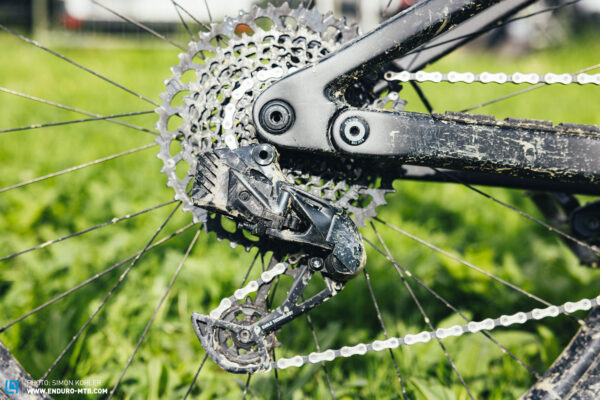
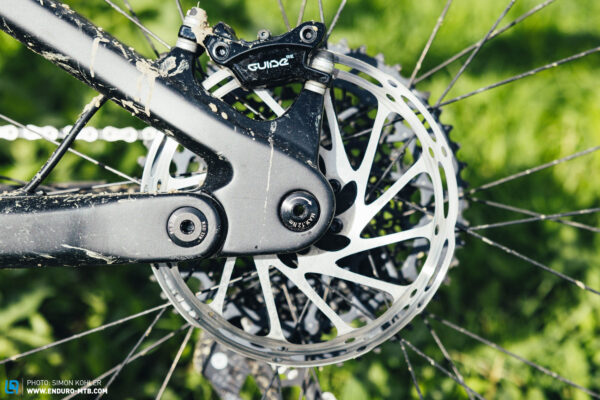
You’ve also got different options for the tires, though you can’t mix and match different front and rear tires. There’s the fast rolling MAXXIS Forekaster variant, the fast and grippy MAXXIS DISSECTOR option, and the plain grippy MAXXIS Minion DHR II model. Our test bike featured the latter with a MaxxTerra rubber compound, which suits the Detrail Stig 135 well. However, the tires all rely on the flimsy EXO casing, and we would recommend upgrading to the thicker EXO+ version at your earliest convenience. Heavy or more aggressive riders should even get themselves tires with the thick Doubledown casing.
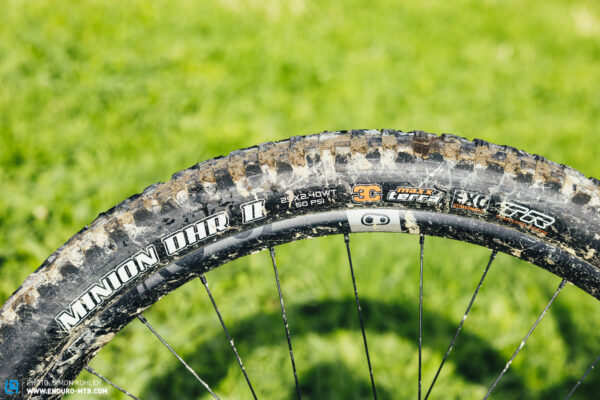
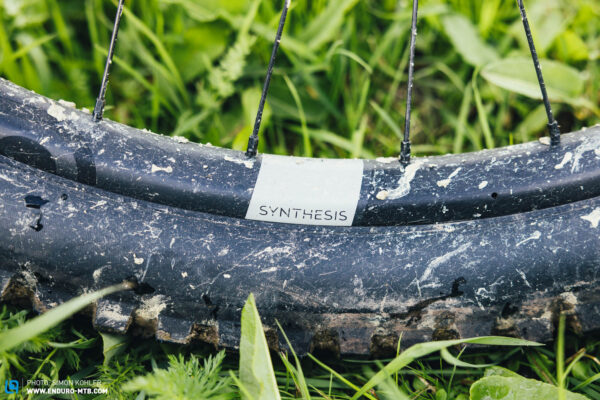
Detrail Stig 135
Specifications
Fork RockShox Pike Select 140 mm
Rear Shock RockShox Deluxe Select+ 135 mm
Seatpost Crankbrothers Highline 3 150 mm
Brakes SRAM Guide RE 200/180 mm
Drivetrain SRAM GX Eagle AXS 1x12
Stem Descendant Truvativ 50 mm
Handlebar Detrail HÖJD 30 Carbon 800 mm
Wheelset Crankbrothers Synthesis Enduro Alloy 29"
Tires MAXXIS Minion DHR II MaxxTerra EXO/Minion DHR II MaxxTerra EXO 2.4"/2.4"
Technical Data
Size S/M M/L L/XL
Tuning tip:
– shorten the handlebar if necessary
– thicker casings like EXO+ or Doubledown for more downhill performance
The geometry of the Detrail Stig 135
The Detrail Stig 135 is available in three sizes, ranging from S/M to L/XL, which is said to accommodate riders from 160 to 195 cm tall. The geometry is moderate and without anything too wild, like a 65° head angle, and 440 mm chainstays across all sizes. Our size M/L test bike has a 476 mm reach, and a short 617 mm stack height. At 440 mm, the seat tube is rather long, which makes it difficult to upgrade to a longer dropper post and thus limits your freedom of movement.
| Size | S/M | M/L | L/XL |
|---|---|---|---|
| Top tube | 575 mm | 601 mm | 627 mm |
| Seat tube | 410 mm | 440 mm | 470 mm |
| Head tube | 105 mm | 120 mm | 130 mm |
| Head angle | 65° | 65° | 65° |
| Seat angle | 78° | 78° | 78° |
| Chainstay | 440 mm | 440 mm | 440 mm |
| BB Drop | 27 mm | 27 mm | 27 mm |
| Wheelbase | 1,202 mm | 1,230 mm | 1,257 mm |
| Reach | 445 mm | 467 mm | 490 mm |
| Stack | 604 mm | 617 mm | 626 mm |
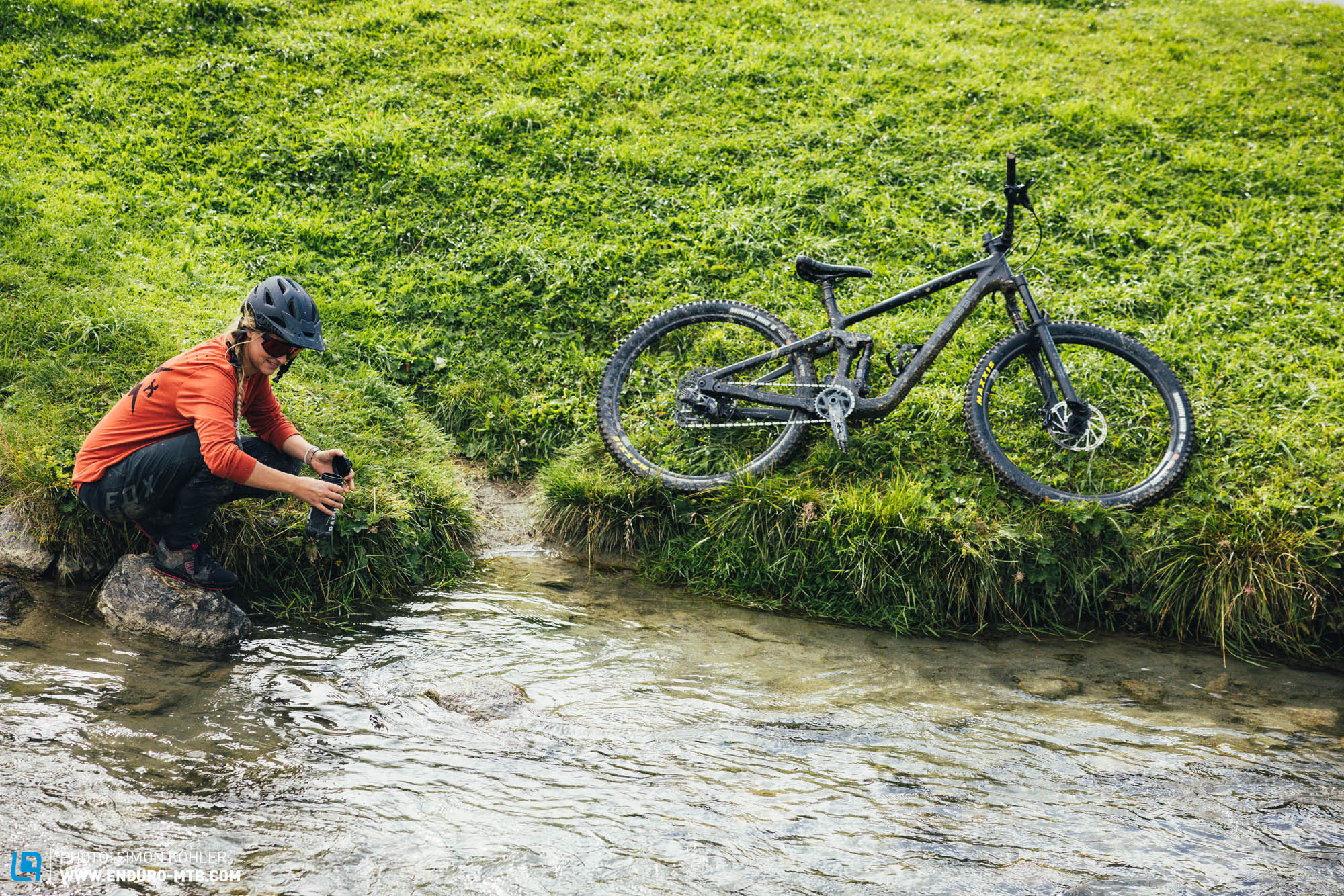
The Detrail Stig 135 on the trail
If you swing your leg over the Detrail Stig 135, you’ll find yourself in a sporty, yet comfortable riding position. It doesn’t place much weight on your hands on level terrain, which lets you tackle long days in the saddle without too much discomfort. Nevertheless, the front wheel stays planted and in control on steep climbs. Just like the riding position, the suspension strikes a good balance between comfort and efficiency. As such, the Stig doesn’t bob while you winch your way up the climbs. Nevertheless, the Detrail’s suspension generates ample grip and does well at absorbing small bumps. It’s only when you sprint that the suspension gives way.

We didn’t feel very well integrated aboard the Stig when heading downhill, which is partly due to the low stack height. The suspension of the Detrail Stig 135 makes for a plush ride, readily cycling through its travel. Due to a lack of support, the Stig tends to rush through its travel rather easily on big hits. You’ll also find that it absorbs a lot of your input when pumping it over rollers and through berms. On the other hand, the Stig offers plenty of grip and comfort on moderate, natural trails, doing a great job of absorbing impacts from rocks and roots. The handling of the Detrail is impressively manoeuvrable too – despite the wide handlebar, which doesn’t suit the bike’s lively feel. There’s no need to shift your weight forward over the low front end, allowing it to cut a fine figure when slaloming through the trees, even when things get tight. However, the low front end also makes you feel like you might go over the bars on steep descents. Furthermore, it takes an experienced rider to keep the Detrail under control when the trail gets rougher and the hits get bigger.

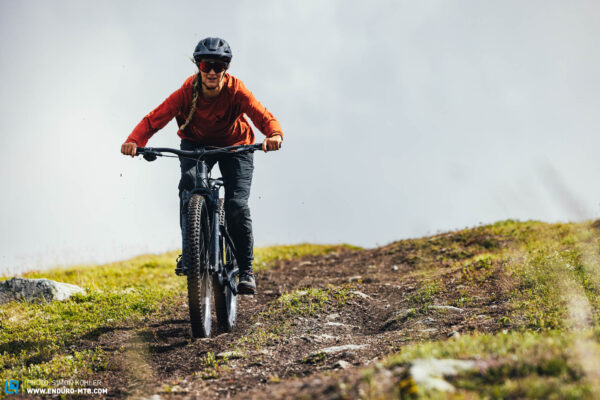

Who is the Detrail Stig 135 for?
The Detrail Stig 135 is an impressive climber, both comfortable and efficient. Therefore, it appeals to riders who like tackling long, all-day loops, but don’t use words like “shred”, and aren’t interested in pushing the limits on the descents. The Stig also appeals to individualists who want a classy, unobtrusive bike that you don’t see on the trails all that often.
Our conclusion on the Detrail Stig 135
The Detrail Stig 135 immediately stands out from the crowd with its minimalistic, yet premium look and feel. It excels on the climbs and on long rides thanks to its pedalling efficiency and comfortable riding position. However, the suspension lacks the composure and support necessary to keep up with the competition on flow trails or natural single track. There are significantly more capable bikes on the market with this much travel, and at this price point.
Tops
- unobtrusive, classy look
- riding position suitable for long distances
Flops
- suspension lacks support
- not very composed
For more information, visit Detrail.com.
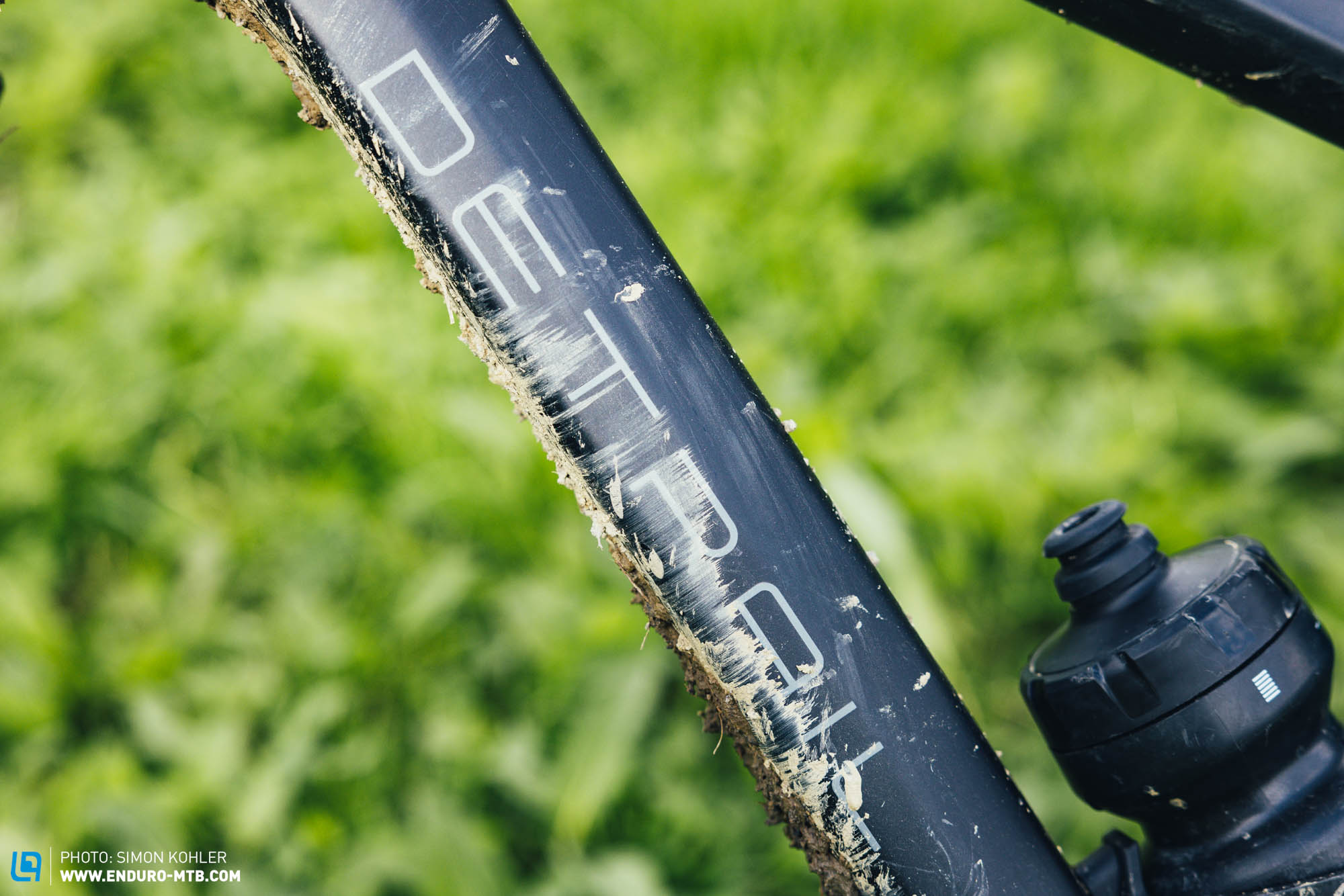
Did you enjoy this article? If so, we would be stoked if you decide to support us with a monthly contribution. By becoming a supporter of ENDURO, you will help secure a sustainable future for high-quality mountain bike journalism. Click here to learn more.
Words: Sebastian Dirscherl, Simon Kohler Photos: Simon Kohler




